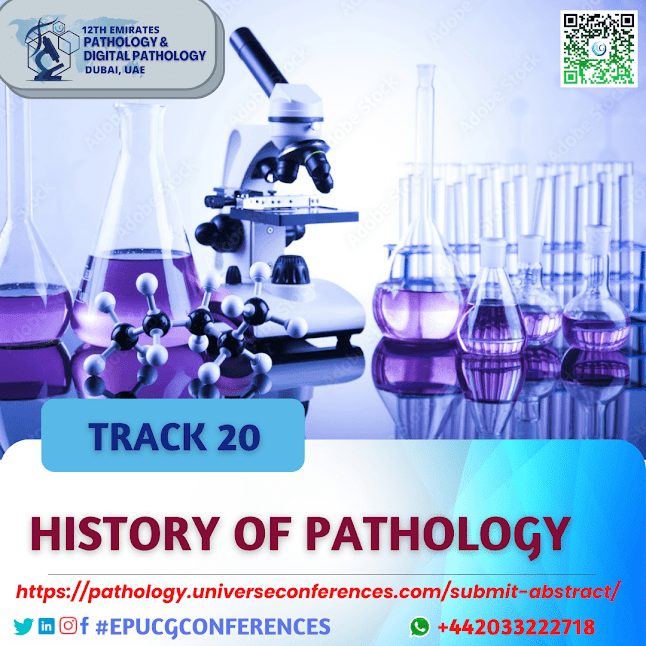AI in Digital Pathology – Deep Tissue Cartography and Tumor
The visual examination of histological slides by pathologists through a microscope eyepiece is used to diagnose tumours. Due to image analysis, digital pathology, or the digitalization of histology slides at high magnification with slides scanners, has increased the ability to retrieve quantitative information. Medical image analysis has advanced dramatically in the previous decade thanks to the development of artificial intelligence (AI) systems. AI has proven to be effective in medical imaging and, more recently, digital pathology. The feasibility and utility of AI-assisted pathology activities have been established in recent years, and we may expect to see these advancements applied to routine histology in the future. We will describe and demonstrate this technique in this review, as well as give the most current findings, and applications in the field of histopathology of tumors. For more details join us at the CME/CPD accredited 11th Emirates Pathology & Digital Pathology Conference on May 09-10, 2022, Online.
Advances in digital pathology
The usage of whole slide images (WSIs), also known as
virtual slides, has grown dramatically as technology for digitising glass
slides has improved and storage costs have decreased. Users can study slides
digitally on electronic screens under various magnifications using WSIs
With WSIs that record a whole slide at high magnification, full remote diagnosis by scanning slides has become a possibility, and the emergence of 5G technology is projected to expedite the usage of WSIs in remote diagnosis. As previously said, there are currently a few operational remote diagnostic networks in various parts of the world. Get more advanced knowledge about of Digital Pathology Hurry Up Register Now and Join us at 11EPUCG2022
Basics of artificial intelligence in pathology
The implementation of diverse computational methodologies,
including AI and machine learning techniques, is made possible by the digitization of pathology
practice. These methods could help pathology labs deal with growing
workloads and expertise shortages by improving diagnosis accuracy, assisting in
the exploration and definition of new diagnostic and prognostic criteria, and
assisting in the management of increased workloads and expertise shortages. The
potential benefits and limitations of progressing these approaches for use in
ordinary clinical practice are discussed in this paper.
History of artificial
intelligence in pathology
Dr. Alan Turing used the term "Computing Machinery and
Intelligence" in the 1950s to define the concept of AI (18). Due to
methodological breakthroughs, advances in computing technology, and
the aggregation and creation of labelled datasets for designing and evaluating
AI systems, AI has seen phases of success and decline since the 1950s.
At the Dartmouth summer research project meeting conducted
by Dr. John McCarthy in 1955, the term artificial intelligence was first used
to describe "thinking machines" that could tackle challenges normally
reserved for humans (19). By changing aspects known as "reasoning as
search," researchers in the field aimed to generate intelligence similar
to that of the human brain. However, only minor progress was made, such as the
ability to solve puzzles and play small games. This was nowhere near the level
of sophistication required to make it a practical technology. When researchers
failed to get the intended results, AI funding was drastically slashed.
The fundamental structure of intelligence in pathology
AI is a broad phrase that refers to a variety of computer technologies,
some of which are referred to as machine learning. Machine learning is a system
in which a computer learns from data over and over again, and the machine can
deduce an answer without the assistance of a human. Deep learning is a machine
learning technique in which multilayered artificial neural networks of computational
"cells" approximate the human brain.
Machine learning creates predictive models from data in
order to recognise trends or perform tasks such as regression or
classification. Unsupervised learning and supervised learning are the two basic
types of machine learning methodologies. Data is organised as paired features
(e.g., pictures or other measures) and their labels in supervised learning
(ground truth). In a process known as training, these data are used as examples
for the algorithm to understand the correlations between the features and
labels.
Oral Pathology Event
, Pathology Seminars, Pathology Congresses,
Pathology Utilitarian Workshop Pathology webinar
2022,
Pathology Medical Webinar, Histopathology meeting, Immunology conference, clinical Pathology webinars, PathologyUCGConferences, CME Pathology Events,,
Pathology Congresses, World Pathology Congress, Clinical Pathology,
Laboratory Medicine Conference, Digital Pathology Gatherings
Visit our website for the upcoming pathology
and digital pathology conference 2022 for more details.
Reach out to us: https://pathology.universeconferences.com/
Mail: pathology@universeconferences.com
| info@utilitarianconferences.com
WhatsApp: +442033222718
Call: +12073070027
Reference pathology and digital pathology
UCGconferences press releases and blogs
Linked In: https://www.linkedin.com/pulse/digital-pathology-advantages-limitations-emerging-dr-travis-stork
Blogger: https://emiratespathologyucgconferences.blogspot.com/2022/03/digital-pathology-advantages.html
#Pathology #Pathologists #digitalpathologyscanner
#Surgicalpathology #Pathologyresident #coronavirusandpathology
#coronaviruspathology #coronaviruspathologyfindings #Surgery #ClinicalPathology
#Pathologie #DigitalPathology #Pathologist #LaboratoryMedicine #Patología
#laboratoriodepatologia #informedepatología #patólogo #telepathology
#remotepathologydiagnosis #remoteconsultant

.png)




Comments
Post a Comment